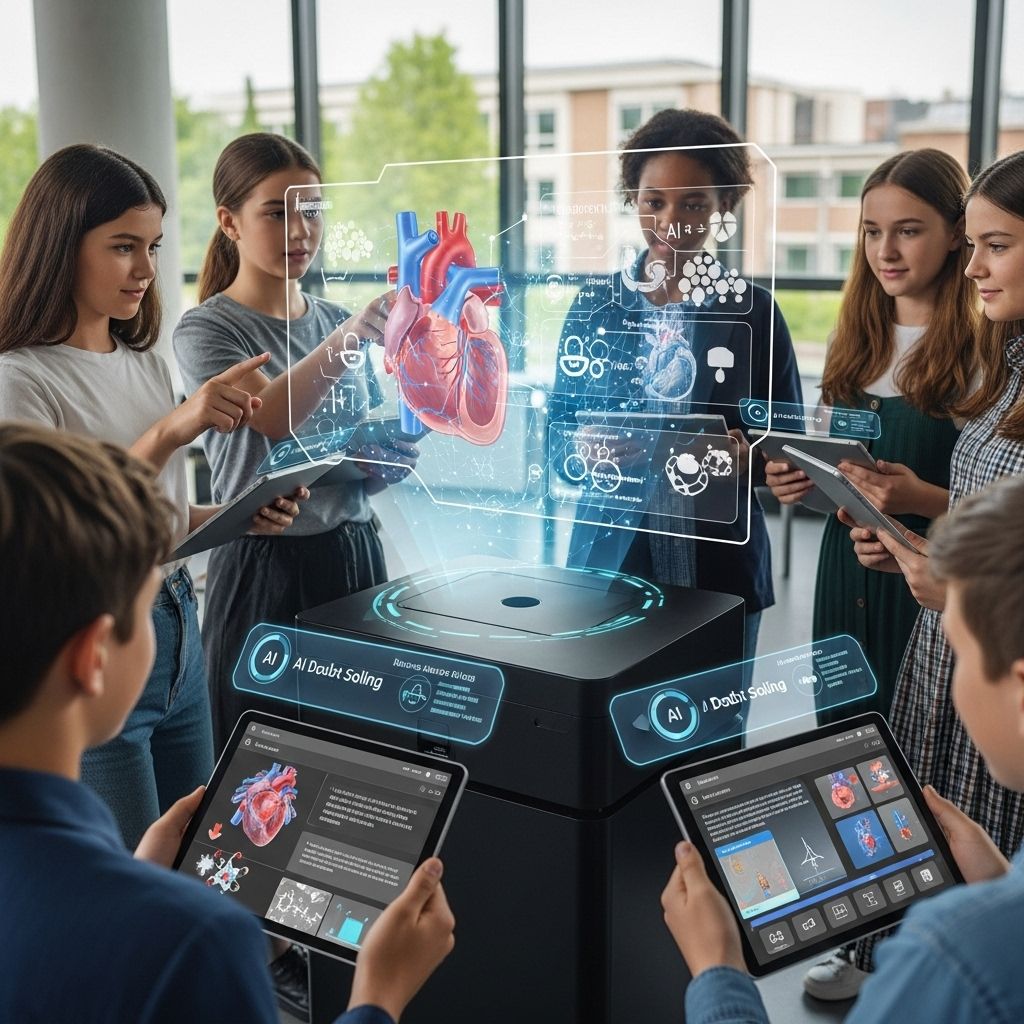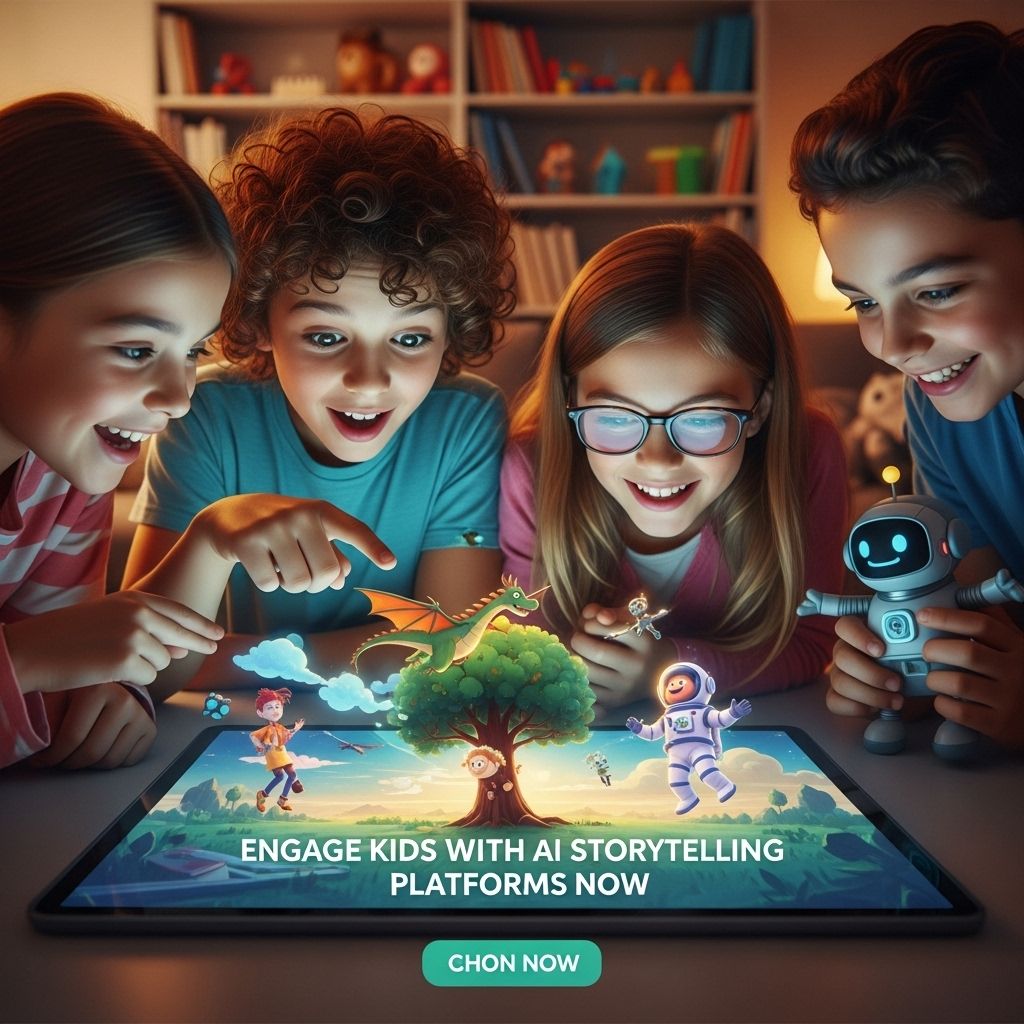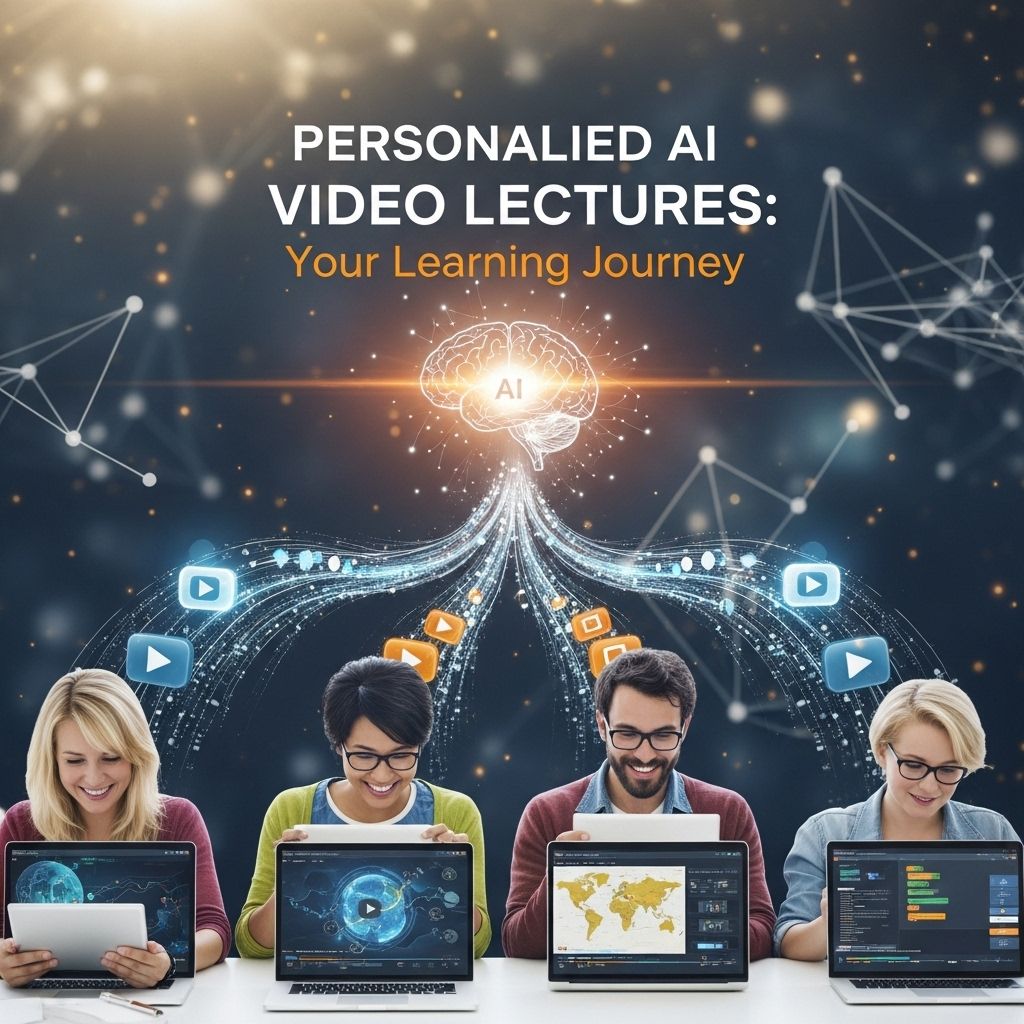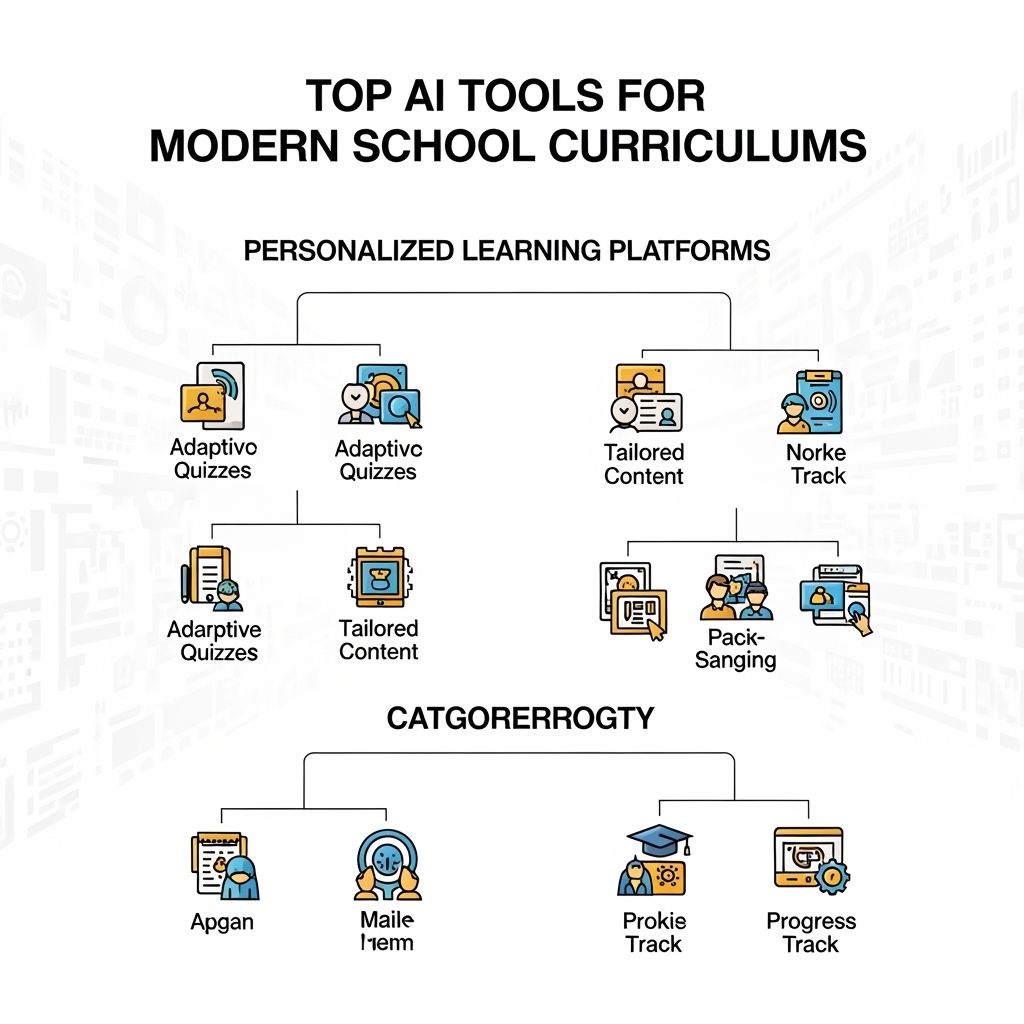Unlocking Learning: The Power of AI Storytelling for Kids
Discover how AI storytelling can enhance children's learning experiences through engaging narratives and interactive content.
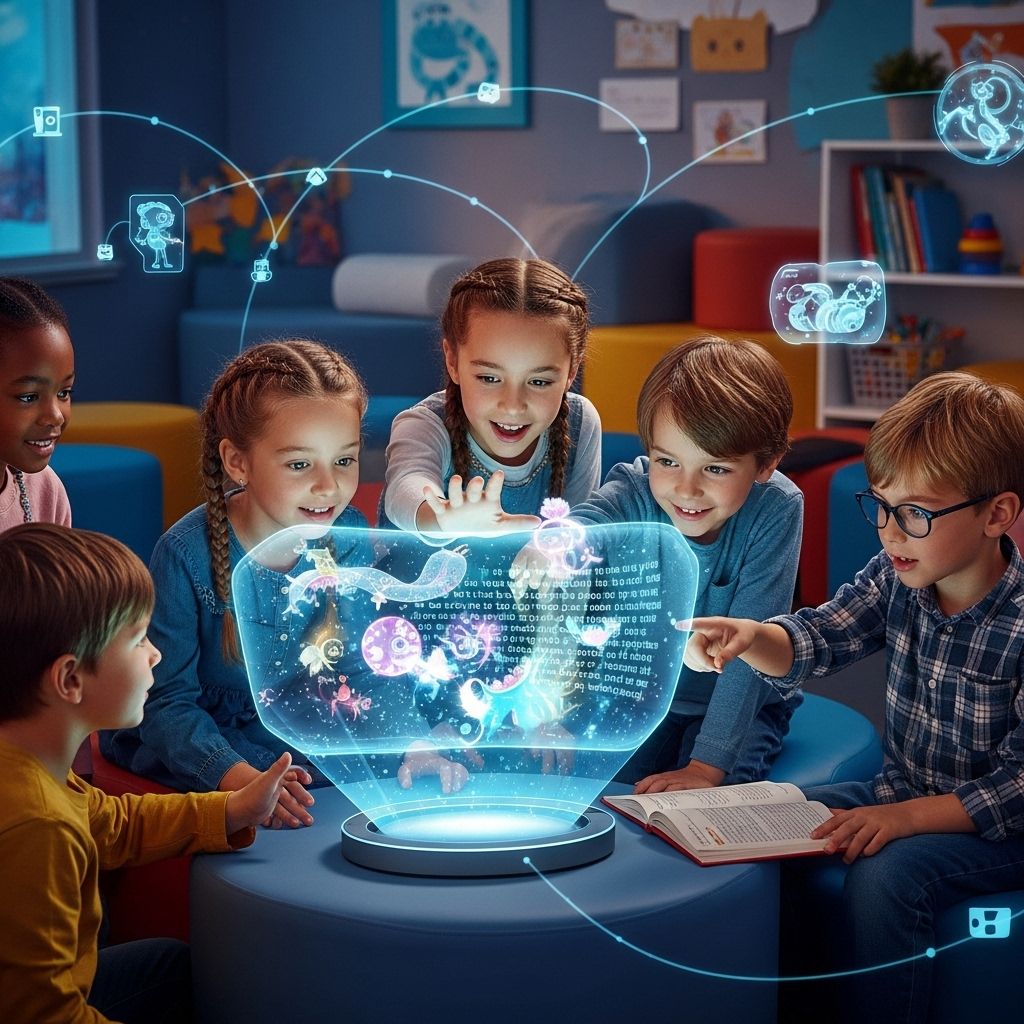
In today’s digital landscape, the intersection of technology and storytelling is reshaping how children engage with learning. With the advent of Artificial Intelligence (AI), storytelling has taken a leap forward, allowing for immersive experiences that captivate young minds. This article explores the transformative power of AI storytelling in education, its benefits, and practical applications.
Table of Contents
The Evolution of Storytelling
Storytelling has been a fundamental part of human culture for millennia. From oral traditions to written narratives, the ways in which we share stories have evolved significantly:
- Oral Traditions: In ancient societies, stories were passed down orally, allowing communities to share morals, history, and cultural values.
- Literature: The invention of writing allowed for the preservation of stories, leading to the creation of books and literature.
- Digital Age: The rise of the internet has opened new avenues for storytelling through multimedia, interactive content, and now AI.
What is AI Storytelling?
AI storytelling refers to the use of artificial intelligence technologies to create, enhance, or interact with narratives. These systems can analyze data, generate unique content, and adapt stories to meet the preferences and understanding levels of individual users. Key components of AI storytelling include:
Natural Language Processing (NLP)
This technology enables machines to understand and generate human language. It allows AI systems to craft narratives that sound natural and engaging.
Machine Learning
By analyzing vast amounts of data, machine learning algorithms can identify patterns in storytelling, character development, and plot structure, enabling them to produce compelling narratives.
Interactive Elements
AI storytelling can include interactive features where children can make choices that affect the plot, fostering a sense of agency and engagement.
Benefits of AI Storytelling for Children
Incorporating AI storytelling into educational contexts offers numerous benefits for children’s learning experiences:
- Personalization: AI can tailor stories based on a child’s reading level, interests, and learning pace, making education more accessible.
- Engagement: Interactive storytelling keeps children engaged, as they become active participants in the narrative.
- Creativity: AI tools can help children explore their creativity by providing prompts or story fragments that they can expand upon.
- Skill Development: AI storytelling encourages critical thinking, comprehension, and language skills as children navigate and interpret narratives.
Implementing AI Storytelling in Education
To effectively incorporate AI storytelling into the classroom or home learning environments, educators and parents can consider the following strategies:
1. Choosing the Right Tools
Select AI platforms that are designed for educational purposes. Examples include:
| Tool | Description | Age Group |
|---|---|---|
| Storybird | A platform for creating online storybooks using AI-generated images. | 5-14 years |
| Talespin | A VR storytelling tool that incorporates AI for immersive experiences. | 8-18 years |
| ChatGPT | A conversational AI that can assist in generating story ideas or dialogues. | 10+ years |
2. Integrating with Curriculum
Link AI storytelling with existing subjects. For example:
- Language Arts: Use AI tools to help children create stories that reinforce grammar and vocabulary.
- Social Studies: Encourage students to write historical narratives using AI-generated prompts.
- Science: Use storytelling to explain scientific concepts through engaging narratives.
3. Encouraging Collaboration
AI storytelling can foster collaboration among students. Group projects can involve:
- Collaborative storytelling where students take turns creating parts of a story.
- Peer reviews of AI-generated content, allowing students to critique and improve each other’s work.
- Creating multimedia presentations based on AI-generated narratives.
Examples of AI Storytelling in Action
Several initiatives are illustrating the potential of AI storytelling in educational settings:
Project Literacy
This global initiative employs AI-driven tools to promote literacy. Through engaging storytelling apps, children are motivated to read and write.
Write with Transformer
Using a transformer model, this AI tool allows users to input a sentence and receive suggestions for continuing the story, promoting creative writing.
AI Dungeon
This interactive game allows players to create and navigate their own adventures powered by AI, encouraging imaginative storytelling.
Challenges and Considerations
While the benefits of AI storytelling are compelling, certain challenges must be addressed:
- Quality Control: Ensuring that AI-generated content is appropriate and of high quality is vital to maintaining educational standards.
- Data Privacy: Protecting the data and privacy of young users is paramount, necessitating robust security measures.
- Screen Time: Balancing the use of technology with traditional storytelling methods is important to avoid excessive screen time.
The Future of AI Storytelling in Education
As technology continues to evolve, so too will the possibilities for AI storytelling. Future developments may include:
- Enhanced Interactivity: More sophisticated AI systems could allow for deeper interactions, adapting stories in real-time based on user feedback.
- Cross-Platform Integration: AI storytelling tools may become integrated with other educational technologies, creating a seamless learning experience.
- Global Accessibility: Efforts to make AI storytelling tools available in multiple languages and formats will help reach a broader audience of learners.
Conclusion
The potential of AI storytelling in education is immense, offering children a unique way to engage with narratives while developing essential skills. As we embrace these technological advancements, it is crucial to approach them thoughtfully, ensuring that they enhance rather than replace traditional storytelling methods. By doing so, we can unlock a new world of learning possibilities for children everywhere.
FAQ
What is AI storytelling for kids?
AI storytelling for kids refers to the use of artificial intelligence technologies to create engaging, interactive stories tailored for children, enhancing their learning experience.
How does AI storytelling benefit children’s learning?
AI storytelling can foster creativity, improve language skills, and enhance comprehension by providing personalized narratives that adapt to a child’s interests and reading level.
Are there any age restrictions for AI storytelling tools?
Most AI storytelling tools are designed for children aged 3 to 12, but some platforms offer content suitable for older kids as well.
Can AI storytelling help with language learning?
Yes, AI storytelling can support language learning by introducing new vocabulary, grammar structures, and cultural contexts in a fun and engaging way.
How can parents and educators use AI storytelling?
Parents and educators can use AI storytelling to encourage reading, spark discussions, and stimulate creativity, making learning more enjoyable for children.
Is AI storytelling safe for children?
Most reputable AI storytelling platforms prioritize safety and privacy, ensuring that the content is age-appropriate and secure for children to use.

